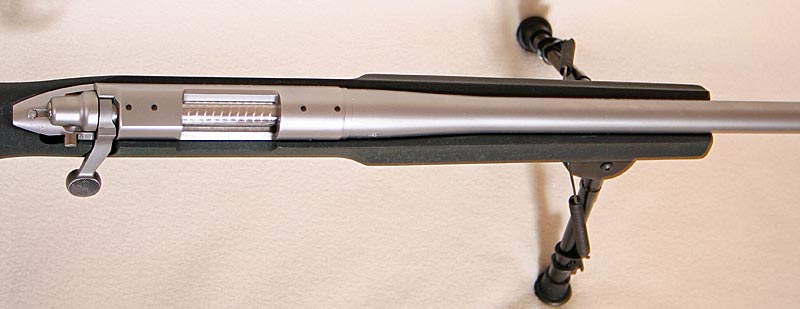If you ever wondered why some barrels are more accurate than others here are a few key factors that make the determination!
In any given caliber, some barrels will group shots more accurately than others, even if they are installed on the same action. There are many factors that determine rifle barrel accuracy. Here are some of the most common. Note that these factors can and do occur interactively as groups that can shift over time.
1. Steel Quality
Inclusions, localized variations in hardness or composition or other imperfections in the barrel steel can affect the smoothness and uniformity with which it is drilled, reamed, rifled and lapped. These, in turn, can have an adverse effect on accuracy.

2. Dimensional Uniformity
The width and depth of the lands and grooves, diameter of the bore and twist rate of the rifling should be as uniform as possible. Top-quality match barrels typically have around .0003/inches or less of variation in bore dimensions. A device known as an air gauge is often used to determine the uniformity of bore dimensions.

3. Chamber Alignment
The chamber may be misaligned with the bore axis in two ways. First, it can be skewed such that the axis of the chamber is angled to the axis of the bore. Alternately, the chamber access may be parallel to the bore, but offset to it. Either defect will cause the bullet to enter the bore at an angle, leading to in-bore yaw and an increase in bullet dispersion. A chamber that is properly aligned but cut too generously will allow the cartridge to lay in the bottom where it becomes misaligned in relation to the bore, creating the same situation that occurs with a misaligned chamber. A perfectly aligned chamber is a critical factor in obtaining maximum accuracy from a rifle barrel.
4. Throat Configuration
Throat diameter, throat length and throat angle all determine how the bullet travels from the case mouth into the rifling. Optimum accuracy is normally obtained with a throat length that puts the bullet lightly in contact with the rifling or just shy of such contact. With reloaded ammunition, the bullet can be seated to give an optimal relationship with the throat of a specific rifle. With factory ammunition, differences in throat configuration can sometimes produce significant accuracy differences.

Revolvers can be said to have two throats: The first is in the chambers of the cylinder just forward of the shoulder for the case mouth, and, second, the forcing cone in the barrel. The dimensions of both must work together. In the cylinder, a throat that is too small in relation to the bore yields an undersize bullet that will not grip the rifling. An overly generous throat can produce an oversize bullet that must be deformed excessively to fit in the bore. Many pistolsmiths feel that a gentle taper in the forcing cone guides the bullet into the bore without deforming it. A perfect chamber and forcing cone may be compromised if one or more chambers in the cylinder is misaligned with the bore at the moment of ignition.
5. Muzzle Crown
As the bullet exits the barrel, hot, expanding propellant gases flow out around the bullet’s base at high pressure and velocity. A crown that is not exactly square to the axis of the bore will allow gas to escape around one side of the bullet first, potentially producing yaw—which can decrease accuracy.

6. Bore Finish
The better the finish in a bore, the more uniformly a bullet will move through it. Furthermore, a smooth bore finish has less of a tendency to pick up lead or jacket fouling than one that is rough. Although bores with different levels of surface finish may give the same initial level of accuracy, the bore that fouls more quickly will lose accuracy faster. Tests have shown, however, that a bore can be too smooth. In such a bore, bullet fouling is actually greater than in a slightly rougher bore.
7. Bore Taper
The bore of many rifle barrels is slightly larger in diameter at one end than the other. In match-grade barrels, the taper may be so small that it has no effect on accuracy. With production-grade barrels, however, the amount of taper may be enough to adversely effect accuracy, particularly if the bore is larger at the muzzle than at the chamber. Such reverse-taper barrels squeeze the bullet down to the smaller bore diameter at the chamber end, then allow the bullet to yaw as it travels through the larger diameter end. For this reason, whenever possible, it is preferable to ream the chamber at the end of the barrel with the larger bore diameter.
8. Thread & Shoulder Alignment
Most rifle barrels thread into the receiver until stopped by a shoulder on the barrel that abuts the receiver face. For best accuracy, barrel threads must be cut so their axis aligns precisely with the axis of the bore…


